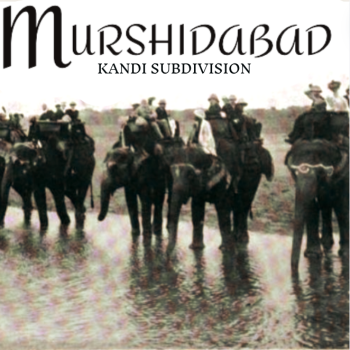More shameless self-promotion time! Here’s my interview with Kawthar from MidEast Youth. It was originally published there.
Reporting on Muslim women has become the craze of the day. While in many cases journalists are well-intentioned and honestly seek to report objectively on aspects relating to Muslim women, a large number of the resulting articles is riddled with stereotypes and falsities and lack any depth.
In the face of the media misrepresentations, one woman took the initiative and created an online forum dedicated to analyzing and critiquing the portrayal of Muslim women in the media. Muslimah Media Watch is now one of the fastest growing sites in the Islamosphere and Fatemeh Fakhraie, its creator and editor-in-chief, kindy consented to be interviewed.
Q. For a start, could you please give a brief introduction about yourself?
I’m a twenty-something Iranian-American Muslim woman based in the U.S. I’ve just earned my master’s degree and, thanks to the U.S. economy, am still looking for a day job!
Q. What motivated you to start your blog, Muslimah Media Watch?
For starters, I love complaining. Though I realize complaining is really only the first step to change, it’s the step I think I’m best at!
I always felt and saw the inequality that is dished out to women, and I never fully accepted it as the way things are supposed to be. As I got older, I read more and more about feminist movements in the West. While I could always identify with part of their struggles, I always felt that something was missing. There were parts of me that always felt left out. Muslim women weren’t represented. Iranian women weren’t represented. And when either (or both) of these two groups were represented, they did not represent themselves, and they were not talked about with the same tone as the other feminists who are white and “first world”.
After interning at a western feminist magazine and beginning to read a blog that centered on non-white issues (both of which discussed media representation of their respective groups), something clicked. I love media criticism, and I was sort of in the middle of these discussions, but they weren’t specifically aimed at me. So I decided to create my own blog, a space where women like me can finally have a forum for ourselves that is specific to our media representation. It includes feminism, religion, and ethnicities, which enables us to go beyond one issue and look at how they all intersect in the media.
Q. Although Muslims are often portrayed as a monolithic bloc in the media (or at best classified as either liberal/conservative), there are many dimensions to the Muslim community. How have you managed to integrate those myriads of voices without having the discussion steered away into “my Islam vs. your Islam”?
Moderating is a difficult job because it’s a balancing act. MMW has been accused of being both too liberal and too conservative, which makes me think that we’re right on track. My contributors and I are all from different races, nationalities, sects of Islam, etc., but we’re all Muslim women who usually hate how we’re represented.
The “my Islam vs. your Islam” discussions get old quickly; they just go on forever without going anywhere productive. I make sure that readers understand that our site is about media representation of Muslim women, not a place for religious debate.
Q. A recurring topic in your posts is that of veiling and it tends to lead to heated discussions. Why do you think the veil is such a central issue when it comes to Muslim women? Do you think it receives more attention that it deserves?
Frankly, I’m sick of talking about headscarves and Muslim women’s clothing (as I think many Muslim women are). Most Muslim women have more important issues to worry about. However, since headscarf talk is in the media, we cover it.
I definitely think that headscarves and face veils get more attention than they deserve, both in the media and in Muslim communities. In Western media, Muslim women’s clothing is used as a symbol to reinforce the idea that Muslim women are more oppressed or different than Western women.
Within Muslim communities, the headscarf has become such a central issue because it has been deified into something it’s not: a symbol, a representation, a banner. In reality, it is a piece of cloth. A bunch of fibers woven together. But people take it, give it meanings, and then use it as a flag to fly their ideals or politics or what have you.
The headscarf and face veil are personal things, in my opinion. You wear them or don’t, for whatever reasons, but either way you go about your business and don’t give a thought to whether others are wearing them or not. A bundle of fibers cannot be a measuring tool to figure out how good or bad someone is, or what their political beliefs are or aren’t. There are as many different ideas behind veils as there are Muslim women, so I don’t understand why so many people (men and women both) can’t just accept these differences and move onto bigger problems. We’re all Muslim, can’t that be good enough?
Q. Even though you tend to focus on Western media outlets, those from predominantly Muslim countries aren’t free of their stereotypes. Is there a marked difference in the way both portray Muslim women?
We aim to critique all media that affects Muslim women, and Muslim countries’ media is no exception. When the “lollipop campaign” popped up in Egypt, we were right on it.
Unfortunately, since the majority of our contributors are based in North America, we have to rely on the international Muslim blogging community, tips from our international readers, and word-of-mouth for much of our international coverage.
I do believe there are similarities and there are differences. Predominately Muslim countries in North Africa or South/West Asia (NASWA) often portray women the same way that western outlets will portray western women: fitting the cultural ideal of beauty, existing only in relation to men (as a wife, for example), as a symbol for national/cultural traditions, and/or longing for marriage or that perfect shade of lipstick. As if that’s all that women anywhere long for: “Oh, if I just had a better shade of lipstick, all my problems would melt away! If I had a new scarf, I would find the right man for me!”
Q. The term “feminist” bears a negative connotation to many in the Muslim world. As a self-proclaimed feminist, were you ever met with critical reactions and how do you respond to them?
“Feminism” is just a word. It’s been imbued with a lot of negative connotations, both in the East and West. Even if they wouldn’t call themselves feminist, a lot of women in the NASWA regions would agree with things that could be labeled as feminist: better education for girls to combat female illiteracy, more equitable divorce laws, harsher enforcement of penalties against rapists, more equal workplace conditions, etc. If people look past our labels into our discussions, they might agree with some of what we have to say.
Both MMW and myself personally meet with criticism. People sometimes dislike the stances I take as a feminist on certain things both inside and outside of MMW (though I try to keep my politics off MMW, but I write for Racialicious and other outlets when I get a chance). Muslims sometimes refuse the idea that feminism can be Islamic and non-Muslims sometimes refuse the idea that a Muslim can be feminist. It can get frustrating, but I can’t let others define me or my work. Those who want to listen and/or politely debate, will; I’m not particularly concerned about those who don’t.
Q. What would you ideally like media coverage of Muslim women to be?
Obviously, I’d be thrilled if stereotypes (such as those of exoticism, danger, repression, etc.) would finally just die out. I’d like to see Muslim women represented as we are: people of different viewpoints, races, levels of practice, sexualities, nationalities, abilities, etc. Muslim women are just like any other people: all different.
I want to see us define ourselves without worrying about becoming pigeonholed about being “this” or “that” type of Muslim or woman. I want to see us speak for ourselves without facing backlash or unfair appropriation from our communities, societies, and governments (both Muslim and non-Muslim). I’d like images of Muslim women to be contextualized instead of becoming cultural shorthand for things like “religion” or “conservative” or “security threat.”
Q. When I first visited the site, I quickly saw that it had the potential to move beyond a group blog or online forum and have a lasting impact offline. What are your long-term plans for the site? What do you have in store for the future?
First of all, I want to thank MidEast Youth for all the help you’ve given us. It’s partly because of this network that MMW has grown into what it is now.
I’d love to increase our international coverage: we have only one contributor, located in Egypt, and I’d love more input from the NASWA regions, as well as Europe, Africa, and South East Asia. I don’t know about the strength of Muslim communities in South America yet, but I’d love to see coverage from that region, as well.
So far, I’ve taken the blog thing one day at a time and haven’t given an incredible amount of thought to long-term plans. I think it would be great if we could land some interviews with Muslim women who are highly visible in the media. Eventually, it could be pretty cool have a forum similar to talkislam.info, where a community of readers can post things relevant to Muslim women in the media. Perhaps we could have a sister site that is like MMW, but goes beyond the usual topics that are covered in Muslim women’s magazines.















